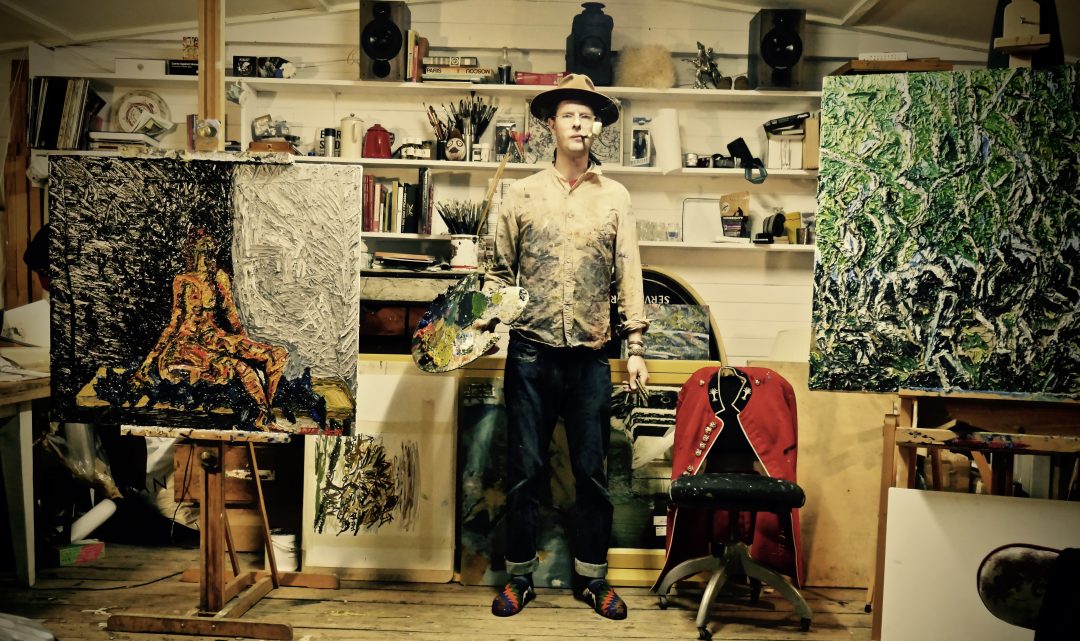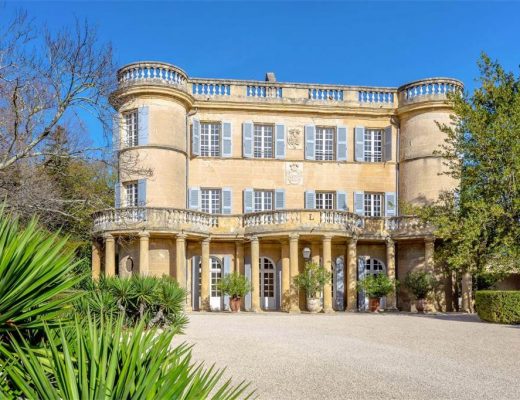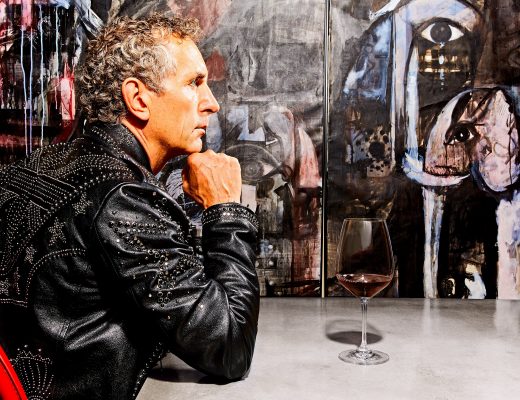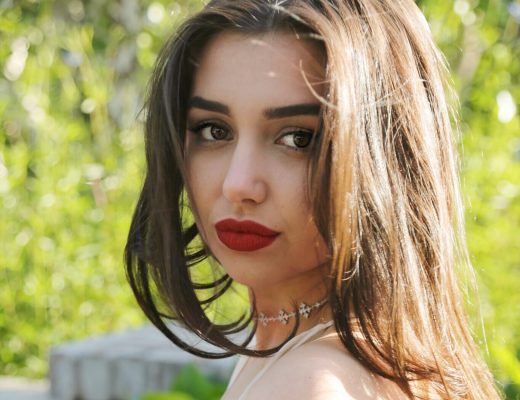Meet His Highness Prince Rostislav Rostislavovich Romanov, a member of Russia’s former ruling Imperial dynasty and an incredibly talented artist “who strives to capture the beauty and strangeness of the world.” Prince Rostislav’s highly imaginative work sits at an avenue where modern figurative meets abstract.
The Prince, who is best known by his nickname Rosti, pushes his viewers to see the underlying work beneath his art by rationalizing a time-tested approach of trial and error. Prince Rostislav’s compositions force us to feel in an era that has nearly lost itself to meaningless pieces of art.
His Highness’s artwork leads viewers down a path of the utmost originality, showcasing provocative scenes reminiscent of a bygone era of Russian History mixed with modern cultural elements that engulf the strange world around us. If a typical picture says a thousand words than a painting by Prince Rostislav screams a million.
What is the inspiration for your current series?
“Inspiration is a funny thing for me! I have travelled and asked that question to many people across the Art World. The best quote about inspiration, is when I asked that question to the late Oscar De La Renta, he bent down to me (I was 17 at the time, he was a tower of a figure!) put his fingers to his eyes, widened them, and said, “Everywhere!”
That took me a long time to understand, from the ages of 17 to 28, I thought how arrogant! Only after turning 28, when I got sober and started to look what was around me, I realised he was right! So that is the foundation for me to build on.
At the moment, I am really into shapes and lines with a limited palette. Which reminds me, I had a conversation with the Queen of Denmark once, found out she is a keen artist! So, we were talking about art, and I foolishly told the Majesty that I deal with just colour no shapes or lines. The Queen of Denmark turned around to me with her cigarette in one hand and said to me this, “No matter what type of artist there is, from the back of their minds to the paper they all use lines.””
You’ve lived across the globe, from the USA to Russia and the UK, that said, how do you feel that your travels have influenced your work?
“The one thing I learnt from my family history, is that they always acclimatise to where one is. This little bit has helped me to adapt to the local culture; also, to have lived in so many different places helped me understand a different side of the world. The fact is I always want to be influenced by different cultures, people and art! We live in an age where travel is more accessible now than say 20 years ago! Where ever I go, I look into local folk art and textiles to figure out how they use colour and shapes.
For example, I was in Lisbon for a holiday. Strangely, it was the first holiday where I did not take any art equipment with me – never again! Portuguese ceramics – their tiles are amazing! It gave me an idea to put tiles on the lower half of my house one day!
But for me, I want to go to Mexico on the Day of the Dead! Ever since I worked at the De Young Museum, and was there to help out in the Chicano art exhibition, South America has genuinely interested me, the stories, the shapes, and colours will be forever burned inside my skull.” 
How did you first get involved in the Art world? Was it an encounter with art in your childhood, or through family or school?
“Simple, I was terrible at art when I was a kid from ages 0 through 14. I was not setting the school alight with my art! The only reason I choose Art and Design for my GCSE, (Which is the English National Exam every kid has to take when they are 16. Kind of like one’s SAT’s I think?) if an artist can put a shark in a tank like Damien Hirst, or drip paint like Jackson Pollock. I said to myself I can do that, so I thought it would be easy! But at that time, I was speaking to my art teacher (God, I feel sorry for her, me spilling my guts about the death of my father to her! I do not know if she had training in that? Oh well.) She told me to paint my feelings, which I did, then she told me to look at Kandinsky, which I did.
That is when everything changed, I had an outlet where for a brief moment I could escape and use my pain, my emotions inside of me. She left, then came in my mentor John Hinchcliffe, he put me onto landscapes. When John Hinchcliffe arrived, I was in my last year of school, and John turned around to me and said, “You could do it. You can become a professional artist.” I had nothing better to do with my life, so I thought why not! Off I went.”
If there is just one thing that a viewer takes away with them from your work what would you like that to be?
“To get to that finished piece of art, I had to fail so many times. So, failure is only really a failure if you do nothing about it, failure can be the best type of inspiration! So, try to learn, feel, be open! I always say that art is my life, and my life is art! It makes it that much more precious and fun. Oh, a couple of things my mentor taught me, first keep it simple. (The best thing is your simple, will be different from my understanding of simple, which is spectacular in itself!) The other thing, is everything leads back to itself like printmaking has helped me understand more about shapes and patience, which has allowed me to see and explore different ideas and develop my paintings.”

Tell us about some of the work you’re doing with Raketa, Russia’s oldest Watch Factory, which was founded by your ancestor, Peter the Great. Have you always been passionate about Horology?
“Ever since I was a child, I’ve loved watches, how they are designed, how they all work beautiful and efficient, with no waste what so ever! That alone has taught me the importance of what I am working on, and not to waste that space. Also, to learn a different and highly crafted art form is rare! I don’t think the big watch companies in Switzerland would allow me into their workshop, and learn for free. Working in Horology has put a different set of limits on me, which is wonderful. How to get all of the information that I use into such a small area, and to still have the same effect of one of my art pieces! Last thing horology has taught me, is working inside the limits. (If one looks at the limits, there is a lot of space to play with.)”
What does it mean to you personally to be a member of the Romanov family?
“This question has always troubled me. Am I an Artist, or am I a Romanov? For so long, I thought both could not coexist with each other! So, it was easy to rebel against both of them for a long time. It is only now, I have come to realise that both can work together. (I learnt this from my collaboration with London jewellery company Ortaea.) I found that being part of the Romanov family and history has given me an absolute lack of expectation, and fear of people, ideas, and places. But, the most important thing I learnt from my family is that A.) Family matters, and B.) That I have a platform to do some good in the world. I have a friend, Max McLaughlin working on a design for me of the Russian double-headed eagle, but instead of holding a staff and orb, the eagle would be holding a paintbrush and palette with a quote by Tom Waits going around it, I hope. He is still working on it, so I have not seen it yet.”
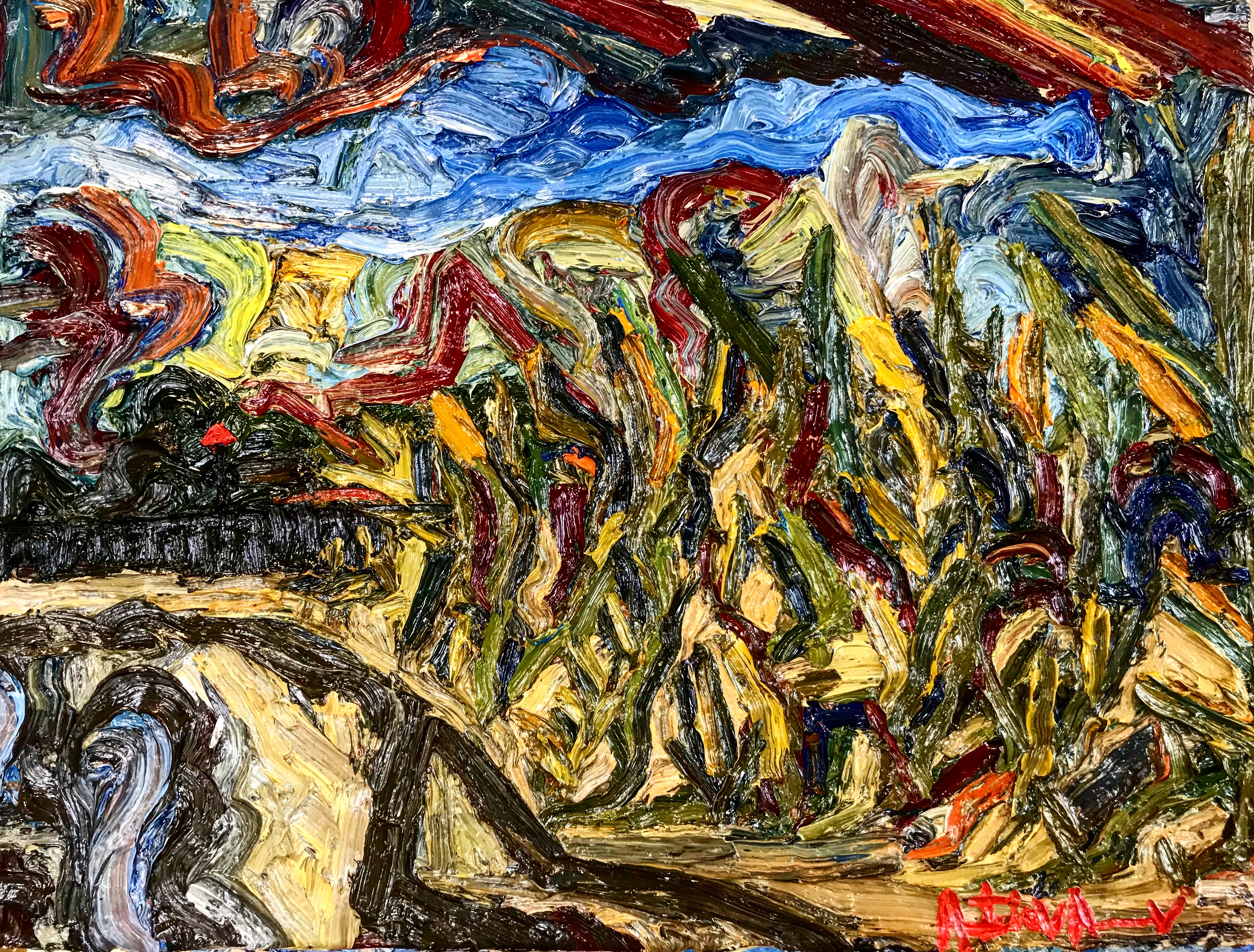
Tell us about your passion for cigars. What are some of your preferred brands at the moment?
“My passion for cigars is something I love! It is strange for me because I am very much an introvert, I love my solitude! But when it comes to cigars, I love going to the cigar room in London on St. James Street, sitting there with people I have never met, from different walks of life, and we are all talking with one another like we are friends. It is amazing comradery.
For the type of cigars, what I like changes with the mood I am in. I do not stick to the big brands, I enjoy trying things further afield. I remember, I was on holiday with my family off of the coast of Venezuela in this beautiful, strange place, and some locals found out that I like cigars. They told me to go to this woman on the Island. So, a driver, a family member and I set off on this journey. We pulled over, and the driver and my family member told me to wait in the car, but the things I saw there were too strange! So, there was a group of locals next to the car with half a carcass of something big! I was freaking out a little bit, thinking the worst. I got out of the vehicle and took a speedy walk to the house, where this old woman was. What I saw was terrific! This old woman was from Cuba, learnt how to make cigars by hand in her home country, but fled to Venezuela where she kept on doing it. I must have got about 200 handmade cigarillos for $4. Kind of wish I took a photo back then.”
Any thoughts on the art scene in Britain today? How do you feel it compares to its counterparts around the globe?
“I can only use my viewpoint. In the UK the whole art scene is flourishing, there are more opportunities here for artists from music, performance, to exhibitions. It is exhilarating to me, I can feel the energy in the air kind of like the early 1900’s but with more health and safety.
In Russia, the art scene is more politically driven, but art in Russia has been like that for more than 100 years, pull and push situation, which gives art a deeper meaning for me. For example, when there was a massive change in two governments that I am close to, I decided that I am going to be more creative use more colour be more vibrant, be more positive with my works to rebel against all the negative judgemental right wrong viewpoints of individual people. So, in a way, I want my art to be there for the people if they want it? Lastly, I have artist friends in the UK and Russia that inspire, drive and push me and my art.”

How has your style changed since you first began painting? And are there any other mediums you’re looking to explore further in the future?
“Yes, I always look at where I started. At random years, I go back to one spot in the world where I did my first plain air painting just to see how I have changed, as I can remember the first one. For a long time when I was drinking, my art was stuck in one place! Mind you, I thought back then, to be an artist one must be an addict, and/or a drunk, playing into the stereotype. Strangely, when I gave up drinking, my mind was playing a trick on me saying, that is the end of being an artist! How wrong was that part of my brain! Literally, my art was an explosion of feelings and colours, when I gave up drinking, only then, I finally gained the perfect practice of my art to control, and manipulate those raw emotions into my art. Not to shy away from my feelings and body, but to let all that speak out!
Also, I am always exploring new things, mediums, and techniques in the art, as it is another way for me to speak. Art has given me a voice, and I am going to shout out with it. I was told from a young age that I am dyslexic. I found it very hard to learn, and the support from schools was not significant until I fell into the art world which led me to a new way to communicate. I have just started to learn about different forms of etching which are amazing, I love it. I am trying different ways to paint by using more body motions. Next year I am going to get into textiles and weaving. I also want to try ceramics! Maison d’Art gallery in Monaco always tells me I should do that! Hell, why not? I live in the UK where it has some of the best ceramics factories. It is beautiful, the more I explore different mediums, the more it helps me in my life and art.”
Like Kandinsky, you often listen to music while painting, with that said, who are some of your favourite artists to listen to while painting?
“When I learnt History of Art at school, I was taught that some artist in Paris in the early 1900’s use to take drugs and drink the Green Fairy to get to that strange place to create. When I was looking at Kandinsky, I started to use music as one of my tools in art. I found that drink could not get me to that strange place to work, the only thing drink took me to was more drink. But, music has brought me to the most bizarre parts of my mind.
Remember that scene from Almost Famous, with The Who album Tommy. For me, the mind-bending staple music is Tom Waits post drink, where he is not afraid to do what he wants in his records, just thinking about it wants me to work even now. One other thing I love is Iggy Pop confidential on BBC Radio 6; it is the same teaching to be open to new beautiful, strange ideas, and music. (I swear every time I listen to him, I end up buying new music that I heard on that show!) But, if I am genuinely stuck, bring out Chuck E. Weiss. I owe these musicians a painting for driving me. I am really into Punk, I just cannot get enough of it, it might be because they stand on the edge of music and push it to where it is just recognisable, and to rebel against the norm and anyone can join. But, to counterbalance it I found this British rapper called Kojey Radical; again, it is how he uses his words and music to communicate what he sees around with his eyes.”

How would you describe your creative process?
“I met an artist back in my younger years in San Francisco, and asked her that question. (Sorry, I sadly cannot remember her name for the life of me.) She said she goes into her studio every day and works. For me, I love being creative, but also what is an essential for me is the craft side of art. That side has made me appreciate and value what I am doing more. I would never let anyone else do that for me, where is the fun in that? When I look back at a painting, I know that I stretched the canvas and sized it with rabbit skin glue and primed it to just how I like it, that gives my pictures a complete feeling for me. I try new things, mostly fail, learn, and work again then slightly change where I failed. I keep my eyes open to new shapes and my mind open to different ideas. For me, even the simplest concept can give me so much creative drive, even if the concept does not come to bear fruit. Lastly, I never stop thinking about art, continually considering, painting, and creating in my mind to see where it fails or not and/or where I need help on my obsession, like that character from Stefan Zweig novella called Chess.”
Any upcoming shows that we should keep our eyes peeled for?
“Sadly, I like collections of museums more, they are regularly there, which means that I can return at any time; so here are the top three museums. One of the places is a part of the Pushkin Museum in Moscow, called the European Gallery, it is the most amazing of museums. Their collection is the envy of any other significant museums’ collections in the world, here they have everything from the only painting Van Gogh sold Matisse “The Dancer” to a whole floor of Cezanne! But, what makes it remarkable is that it is always empty! So, one has plenty of time to look at these paintings and sculptures. Oh, did I mention when you start, the first thing one sees is a whole room of Rodin; how genuinely spectacular that is? But, the other two museums for me are the Chicago Art Institute, (This place holds a special place in my heart. A world of wonder.) and lastly, The V&A in London, for the fact that they have a piece of textile from my mentor John Hinchcliffe.
For me, I follow artists then exhibitions. So, the artists that push me to be a better artist are Dickon Dury, Poppy Jones, Dan Feit, Daira Fursey, Jethro Buck and Louise Thomas. They all are jaw-droppingly fantastic, but what links them all is their work ethic. I feel guilty, but hey, while here, I do have an exhibition coming up in London at C. John gallery from May 14th-18th, just a mention.”
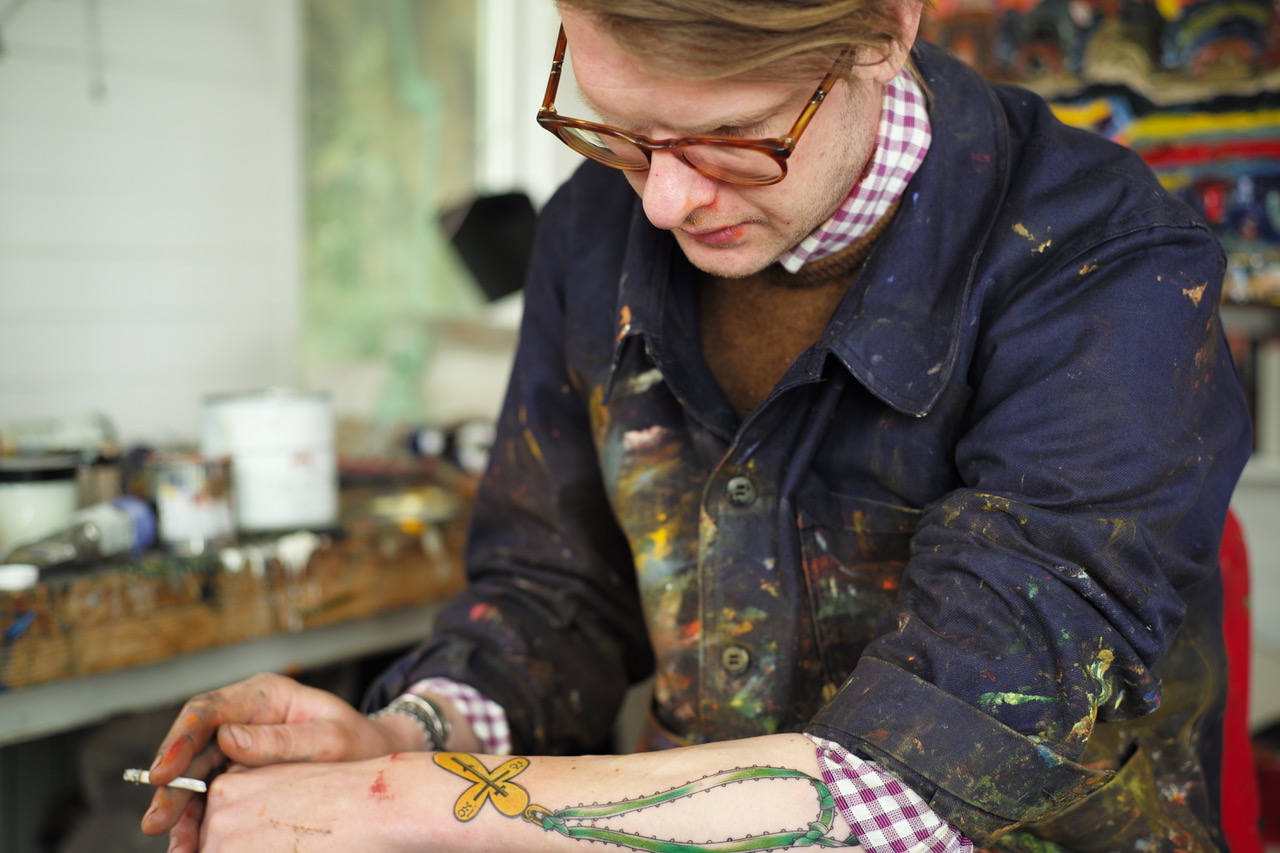
Image credit: Richard Williams
Where can we follow you?
“Here is my website: rostislavromanov.com, also Instagram: @rostislavromanov and lastly Ello is again: @rostislavromanov that is for the World Wide Web, but I am always lurking about somewhere on Winchelsea Beach with my Chocolate Labrador, Bister.”
Images courtesy of: His Highness Prince Rostislav Romanov

